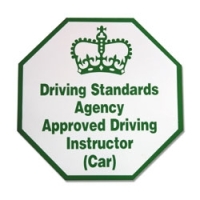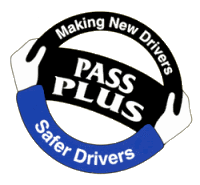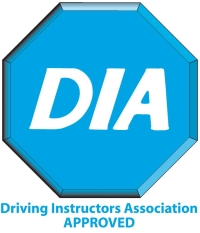Syllabus
Wheelwise follows the syllabus set out by the Driving Standards Agency (DSA). You are ready to take your driving test when you can consistently do the following in the syllabus without any help from your Instructor. This is shown in the Driver’s Record by having a Level 5 on everything.
Listed below are the requirements for the syllabus and a brief description of what you could expect. They may not necessarily be taught in the following order. You will sometimes cover several topics in a single lesson. This will depend on the pupil’s experience, the area where you live and the road conditions on the day.
LEGAL RESPONSIBILITIES
As a driver you need to know how the law relates to yourself and to your vehicle.
It is your responsibility to make sure that you are in a fit condition to drive safely. You need to understand how your driving can be affected by:
Health
Eyesight
Alcohol
Drugs, including medication
Tiredness
Mobile phones
Other distractions
You must ensure that your car complies with the regulations:
Your car is taxed and has a valid MOT certificate if it’s more than three years old
Your car is insured for you to drive
The car is in a roadworthy condition
Your driving licence is in order
You must know the legal obligations in the event of an accident.
SAFETY CHECKS
You need to be sure that your car is in good working order before you start the engine. You need to be made aware of what you need to check, how to do it, how frequently you need to check and why it is so important.
Petrol
Oil
Water
Electrics
Rubber
POWER
COCKPIT DRILL AND CONTROLS LESSON
You will learn how to set the car up so that you can reach all of the controls safely and have optimum visibility. The car you are using needs to be comfortable and ready for you to drive before you turn the key in the ignition. You will be taught the correct order to do the cockpit checks and why it is essential that you make these checks, as well as the legal requirements for seatbelts.
You need to gain a full understanding of the car’s controls including foot and hand controls. By the end of this lesson you will understand WHERE it is, WHAT it does and WHY and HOW to use it.
MOVING OFF AND STOPPING
You will learn to move off, coordinating the use of accelerator, clutch and footbrake. You will learn about the minimum observations that are necessary to take and what you are looking for before allowing the vehicle to move. Then you will learn about HOW, WHEN and WHY to signal. You will be taught how to steer away from the kerb, driving a short distance and then steer back into the left. With coordination of the foot controls you will stop safely under full control. This will be followed by learning how to secure the car properly and the importance of doing this. By doing this you will have been introduced to routines such as:
POM – prepare, observe, move
MSM – mirrors, signal, manoeuvre
PSL – position, speed, look
SCALP – safe, convenient and legal position
SAFE POSITIONING
You will be taught and understand how to judge the correct position for your vehicle, depending on how wide or narrow the road is you are travelling on and the dangers of driving too near to the kerb or too far to the centre of the road.
You will be taught to understand the safest road position when driving around bends.
You will be taught to understand lane discipline and the importance of getting in the correct lane in good time, and staying in your lane.
You will be taught how cyclists and large vehicles such as lorries need to position themselves and how this could affect you.
You will be taught the minimum clearance you need to leave when passing stationary vehicles or obstructions and WHY.
MIRRORS – VISION AND USE
You will learn how to have effective use of all the mirrors at all times.
This will include WHEN to use the mirrors and which mirrors to check and HOW often to check them.
WHY you need to check them and the importance of regular updates.
How to act safely on what you see.
The different types of glass on the mirrors and the effect of that on your field of vision.
Blind spots – the areas that cannot be seen in the mirrors.
SIGNALS
You will be taught how to understand and respond safely to signals given by other road users and how to give clear, well timed signals so that everyone knows what you are planning to do.
You will also learn about arm signals and signals given by traffic controllers such as the Police.
ANTICIPATION AND PLANNING
Anticipation and planning will be covered in every lesson. These skills are found in all areas of driving.
It is important that you can anticipate the actions of all other road users, including cars, cyclists, motorcyclists, pedestrians, animals and emergency vehicles. By doing this you can be prepared for the risks associated with each type.
By learning how to plan ahead you will give yourself time to respond safely to others actions. This can be achieved by:
MSM and PSL routines
Early identification of hazards from clues
Recognising high risk times, places and conditions
Using scanning techniques
USE OF SPEED
This will be covered in all lessons. Your speed is based on the road conditions, weather, traffic and the presence of pedestrians.
You will be given a full understanding and knowledge of national speed limits and restrictions for different types of roads.
You will be shown how to judge an appropriate speed for the conditions.
You will understand the importance of making progress. You will be aware of the dangers of driving too slowly and driving with undue hesitancy. The dangers of driving too fast will also be covered.
You will learn about safe stopping distance for your vehicle in different conditions and situations and how to calculate this.
OTHER TRAFFIC
In most lessons when you are driving there will be other traffic. It is essential that you are able to respond and behave safely and confidently. You will be instructed in meeting, crossing and overtaking them.
MEETING
You will be able to recognise a meeting situation and use the MSPSL routine on approach.
You will know who has priority and be prepared to give way to oncoming traffic.
You will know how to safely leave adequate clearance from parked vehicles and obstructions and the associated hazards.
CROSSING
Crossing the path of oncoming traffic frequently happens when turning right into a side road or a driveway. This will begin with the MSPSL routine. You will learn about the correct position to take, how to judge when it is safe to cross and the correct point of turn. You must not make the oncoming traffic have to change speed or direction.
OVERTAKING
You will understand the principles of whether it is NECESSARY – LEGAL – SAFE to overtake and the correct routine to follow MPSLMSM – Mirrors, position, speed, look, mirrors (and blind spot), signal, manoeuvre. You will also gain experience on dual carriageways. Entering and exiting on slip roads.
JUNCTIONS
There are many types of junctions. You will need to be able to negotiate all types of junctions safely on any kind of road be it urban, rural, dual carriageway or a one way street.
APPROACHING JUNCTIONS TO THE LEFT AND RIGHT
You will learn to approach junctions from major roads, to minor roads, to the left and right safely, under control and with due consideration for all other road users. This will be achieved by the MSPSL routine. Mirrors – signal – position – speed – look.
EMERGING AT T JUNCTIONS TO THE LEFT AND RIGHT
You will learn to emerge from minor roads to major roads, to the left and right safely, under control, with adequate observations and with due regard for other road users. The MSPSL routine will be used.
CROSSROADS
Using the MSPSL routine you will be shown the differences on observations and priorities when at crossroads compared to other junctions and the additional hazards at crossroads. You will have an understanding of staggered crossroads and the correct procedure for oncoming traffic turning right, offside to offside or nearside to nearside. Traffic light crossroads and box junctions will also be covered.
ROUNDABOUTS
You will be shown the importance of road positioning and lane discipline at roundabouts. MSPSL routine observed here also. You will become confident entering and exiting a roundabout. You will have knowledge of all types of roundabouts:
Standard roundabouts
mini roundabouts
multiple and satellite roundabouts
traffic light controlled roundabouts
UPHILL/DOWNHILL DRIVING
You will learn about the effect of the gradient on the car and how this will affect the use of the accelerator and brakes. How this will affect when you change gears and the different control required for moving off uphill or downhill. As well as safe ways to leave the car parked, unattended on a hill.
PEDESTRIAN CROSSINGS
You will be able to recognise uncontrolled and controlled pedestrian crossings by their visual characteristics. You will be able to approach safely, using MSM routine and scanning techniques. You will learn how to judge the correct speed on approach, depending on pedestrian presence. You will be made aware of when to stop and when to proceed. You will understand the legal requirements as stated in the Highway Code. Pedestrian crossings covered will include:
Light controlled crossings
zebra crossings
school crossings patrols
split crossings
staggered crossings
CONTROLLED STOP
You will learn to stop quickly as if in an emergency, safely and in full control of the vehicle. You will also learn about ABS and the affect it has on the car. In the event of a skid you will know how to correct it.
TURN IN THE ROAD
You will learn how to turn the vehicle around to face the other way, using forward and reverse gears, safely under full control and with due regard for other road users.
LEFT REVERSE/RIGHT REVERSE
You will be able to reverse into a limited opening to the left or the right, from major to minor road, safely under full control and with due regard for other road users.
BAY PARKING
You will be able to park accurately in a bay in a car park, safely under full control.
REVERSE PARKING
You will be able to park parallel to the kerb behind a car within two cars length.
DUAL CARRIAGEWAYS
You will be shown how to join, turn off to the left and the right and how to leave a dual carriageway. You will understand the use of the central reservation and the different widths and how this affects your ability to cross.
COUNTRY DRIVING
You will experience country lane driving and the different hazards that rural life brings:
Road conditions and visibility
Wild life and animals
Pedestrians
NIGHT DRIVING
You will experience driving in the dark. It is more difficult to judge speed at night. Extra care must be taken at junctions. Pedestrians are harder to see. Less visibility also affects your speed and stopping distance.
You will need to understand when you need to have your lights on and which ones to use.
You will need to be aware of the rules regarding using your horn at night.
You will learn about the rules for parking safely at night.
CAR MAINTENANCE
Covering the show me tell me questions required for the practical driving test.
PASS PLUS
Pass plus is a six-module training syllabus designed by the DSA to develop the skills and knowledge of newly qualified drivers. They can broaden their driving experience safely. There are two factors that make a positive approach to driving.
Attitude:
Responsibility
Care and consideration
Concentration
Anticipation
Patience
Confidence
Skills:
Observations
Assessment
Decision making
Actions
The six modules are:
Town driving
All weather driving
Out of town driving and rural roads
Night driving
Dual carriageways
Motorways



